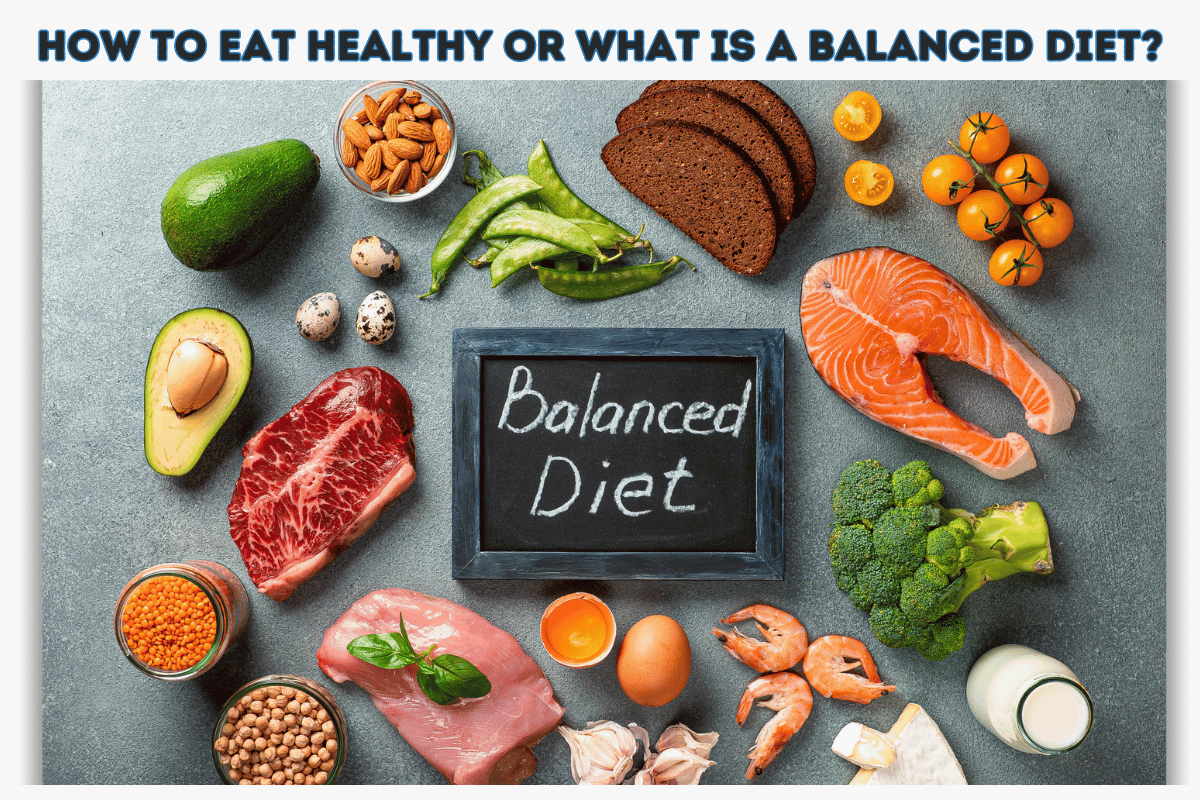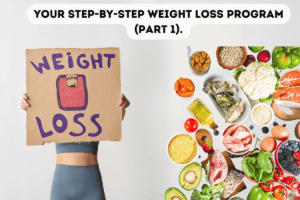In my previous article, “The secret of all diets”, I spoke about weight loss. The main idea was – “If you want to lose weight, you need to burn more calories than you consume”. This principle is the secret of all diets. However, when you are looking just at this principle and forget that your diet should be healthy as well, problems can appear. Your diet should help you not just lose weight but it should also be healthy and balanced. For example, you can lose weight by eating just apples and drinking juices, but how healthy would this diet be? A good diet is essential for our health and well-being and should provide our bodies with all necessary nutrients like carbohydrates, proteins, fats, vitamins, minerals, and water. So, how do we identify what is healthy for us and what is not? To help us answer this question, a UK healthy eating model was created – the Eat-well Guide.
Before discussing the Eat-Well Guide, it’s important to say that it applies to most people regardless of weight, dietary preferences, or ethnic origin. However, it doesn’t apply to children under two years because they have different nutritional needs. Anyone with special dietary requirements or medical conditions must check with their doctor or a registered dietitian before using the Eat-well Guide as well (because they can have individual nutritional needs).
The main rules of the Eat-well guide
Following the Eat-Well Guide is very easy. It has taken all the foods and drinks we consume and split them into five main food groups, each in different proportions. The main rules of the Eatwell Guide would be:
- Eat at least 5 portions of a variety of fruits and vegetables every day.
- Base meals on potatoes, bread, rice, pasta or other starchy carbohydrates, choosing wholegrain versions where possible.
- Have some dairy or dairy alternatives (such as soya drinks); choose lower fat and lower sugar options.
- Eat some beans, pulses, fish, eggs, meat and other proteins (including 2 portions of fish every week, one of which should be oily).
- Choose unsaturated oils and spreads and eat them in small amounts.
- Drink 6-8 cups/glasses of fluid a day.
- Foods and drinks high in fat, salt, or sugar should be used less often and in small amounts.
The Eat-well Guide

The Eat-Well guide shows us that we have to eat a variety of different foods from each of the food groups to make sure our diet provides the range of essential nutrients our body needs to function correctly and stay healthy. We shouldn’t cut out a whole food group, for instance, avoiding starchy carbohydrates could reduce the intake of critical nutrients like dietary fibre and B vitamins. And these would badly affect our health. The size of each group in the Eatwell Guide shows what proportion these foods should make up in our diet.
Most of what we eat should come from ingredients shown in the two most prominent food groups – starchy carbohydrates, fruit, and vegetables. The groups containing beans, pulses, fish, eggs, and meat (proteins group) and the dairy and alternatives group are smaller, showing that we should eat foods from these groups in moderate amounts. The oils and spreads group illustrates that some fat is essential in a healthy, balanced diet, but we should eat less saturated fat. Most of the fat in our diet should come from unsaturated oils and spreads, but all these foods are high in calories and should only be eaten in small amounts.
Foods high in saturated fat, salt and sugars are displayed outside of the main image, meaning they are not needed as part of a healthy, balanced diet. Eating too many of these foods may be bad for our health, so if they are consumed, it should only be done infrequently and in small amounts!
What about mixed dishes?
Many foods we eat, such as pizzas, casseroles, pasta dishes and sandwiches, are combination foods and contain ingredients from more than one of the food groups. For these sorts of food, you need to work out the main ingredients and think about how these fit with the sections in the guide. For example, if you’re having a cottage pie, the potato fits into the yellow segment; the milk in the mashed potato fits into the blue segment, the spread in the mashed potato fits into the purple segment, the meat, meat substitute or beans would fall into the pink segment; the onion, carrots and peas would fit into the green segment.
What about vegetarians and vegans?
The Eat-Well guide model provides guidelines for healthy eating and explains a balanced diet. This diet includes the balance of all macro and micronutrients required in our diet and can be suitable for vegetarians and vegans as well. To make this guide more suitable for vegetarians and vegans, we need to understand their food preferences and adjust the Eat-Well guide. Now, let’s look at vegetarian and vegan food preferences.
Vegetarians do not eat meat, fish, seafood, or animal by-products such as gelatine. They may, however, eat foods of animal origin that include milk, cheese, and eggs. Some vegetarians may eat fish. Vegans, on the other hand, do not eat any foods of animal origin. This includes meat, fish, and dairy products and honey. So, all we need to do to make the Eat-Well guide suitable for vegetarians and vegans is find appropriate food alternatives. The best alternatives would be lentils, beans, pulses, soya, and tofu. Alternative sources for the ‘dairy’ food category could include soya and rice milk products. These alternatives, including plenty of green vegetables, cereals and even yeast extract such as Marmite, will help vegetarians and vegans still obtain a balance of all nutrients. These alternatives would give them enough protein, calcium, iron, and vitamin B12.
Now, let’s take a closer look at each of the food groups:

Fruit and vegetables. Fruit and veg should make up just over a third of the food we eat daily. Aim to eat at least five portions of a variety of fruit and veg daily. For example, three portions of vegetables and two portions of fruit. You should aim for two portions of vegetables at each meal and have the occasional fruit as a snack in between meals. Due to their high sugar content, fruit juice and/or smoothies should be limited to no more than 150ml daily. Fruits and vegetables can be fresh, frozen, canned, dried, or juiced.

Starchy foods. We should eat about one-third of these foods, such as potatoes, bread, rice, pasta, and other starchy foods. Starchy foods are a good energy source and the primary source of a range of essential nutrients, including fibre, calcium, iron and B vitamins. Always choose wholegrain varieties whenever possible, as this will help manage blood sugar levels, appetite and fibre intake.

Milk and dairy products. Have dairy or dairy alternatives, such as soya milk, daily. These foods are a great source of protein, vitamins A and B12, and mineral calcium. Some dairy foods can be high in fat and saturated fat, but there are plenty of lower-fat options to choose from. Go for lower fat and lower sugar products where possible. When buying dairy alternatives, go for unsweetened, calcium-fortified versions.

Beans, pulses, fish, eggs, meat and other proteins. These foods are protein, vitamin and mineral sources, so eating some foods from this group is essential. Beans, peas, and lentils (all types of pulses) are good alternatives to meat because they’re naturally very low in fat and high in fibre, protein, vitamins and minerals. Other vegetable-based sources of protein include tofu, bean curd and mycoprotein. It’s essential to eat enough fish to get the necessary amount of omega-3 fatty acids. The aim is to eat at least two portions (2 x 140g) of fish a week, including a portion of oily fish.
Some types of meat are high in fat, particularly saturated fat. So, when you’re buying meat, remember that the type of meat you choose and how you cook it can make a big difference. To cut down on fat, choose lean cuts of meat, cut the fat off from the meat (for example, skin from the chicken), try to grill meat and fish instead of frying and have a boiled or poached egg instead of fried. Don’t use or eat less often proceeds meats like sausages, bacon, cured meats and reformed meat products.

Oils and spreads. Although some fat in the diet is essential, we mostly overeat saturated fat. We need to reduce the amount of saturated fat and increase the amount of unsaturated fat. Swapping to unsaturated fats can help reduce cholesterol in the blood. Unsaturated oils include vegetable, rapeseed, olive, and sunflower. Butter is high in saturated fat. All these products should be eaten in small amounts, and unsaturated fats should be chosen as much as possible. Also, remember that all types of fat are high in energy and should be limited in the diet.

Foods high in fat, salt and sugars. This includes products such as chocolate, cakes, biscuits, full-sugar soft drinks, butter, and ice cream. These foods are not needed in the diet, and so, if included, should only be done infrequently and in small amounts. Food and drinks high in fat and sugar contain lots of energy, particularly when you have large servings, which can lead to weight gain. Always check the food labels on the amount of saturated fat, salt and sugar and avoid them.
Cutting down on fat, salt and sugar can have many benefits for the health. Reducing saturated fat can lower your blood cholesterol and heart disease risk. One of the easiest ways to reduce saturated fat is to compare the labels on similar products and choose the one lower in saturated fat.
Regularly consuming foods and drinks high in sugar increases your risk of obesity and tooth decay. Cutting down on sugar will help you to avoid these difficulties. Ideally, no more than 5% of the energy should be consumed from free sugars. Always use the food label to help you choose foods lower in sugar. Overeating salt can raise your blood pressure, which increases your risk of developing heart disease or stroke. That’s why cutting down on salt is also very important. Adults should eat no more than 6g of salt daily, and children should eat even less. But remember, we’re getting salt not just by adding it to food, but also, we are getting salt from everyday foods such as bread, breakfast cereal, pasta sauce and soup (salt is already in those products). One of the ways to cut down on salt is to try to replace salt with pepper, herbs and spices (to add flavor to your favorite dishes). The second option is to check the label and choose foods that are lower in salt.

Hydration. The goal is to drink 6-8 glasses of fluid every day. Water, lower-fat milk, sugar-free drinks, and tea and coffee all count (except alcohol). More about Hydration you can read in my article – “All you need to know about hydration”. Fruit juice and smoothies also count towards our fluid consumption, but we should drink no more than 150 ml per day because of the amount of sugar there. It’s better to swap all sugary soft drinks for diet, sugar-free or no added sugar varieties to reduce your sugar intake. Alcohol doesn’t count towards our fluid consumption and should be limited to no more than 14 units per week for men and women.
Food labelling (how to choose healthy products)
Many pre-packaged foods have a food label on the front of the pack, which shows the nutrition information per serving. They also refer to reference intake, which tells you how much of each nutrient should be included in the daily diet. The percentage refers to the product’s contribution to the reference intake for each nutrient.
Food labels can help you choose between foods and pick those lower in energy, fat, saturated fat, sugar and salt. Where colour-coded labels are used, you can tell at a glance if they are high, medium or low in fat, saturated fat, sugars and salt. Try to pick products with more greens and ambers and fewer reds for a healthier choice.
Remember that the portion sizes used on the label are suggestions and may not be the same as what you consume. For example, some foods and drinks commonly consumed as single servings have the nutritional information presented per half pack.
How much food do I need?
Different people need different amounts of energy. It all depends on weight, age and activity level, which can vary considerably. To maintain a healthy weight, our energy intake must be versus energy expenditure. In other words, if our goal is to maintain a healthy weight, we need to burn the same amount of calories that we consume.
Below is showed a table of recommended daily amounts for the ‘average’ healthy individual of average weight and activity levels. It excludes pregnant and lactating females and any individual suffering from illness. Also, it excludes those individuals who are very active. This is the amount of calories that you need to eat if your goal is to maintain your weight. If you want to lose weight, you must burn more calories than you consume (eat 500 kcal less than in the table). If you want to gain weight, you must eat more calories than you burn daily (eat 500 kcal more than shown in the table).
| Estimated average energy requirements for the average adult | ||
| Age | Men | Woman |
| 19-49 years old | 2,550 Kcals per day | 1,940 Kcals per day |
| 50-59 years old | 2,500 Kcals per day | 1,900 Kcals per day |
This table shows just the average requirement. To understand more about how many calories are necessary precisely for you, read my article – “The secret of all diets”.
Conclusion
The main rules of the Eatwell Guide would be:
- Eat at least 5 portions of a variety of fruits and vegetables every day.
- Base meals on potatoes, bread, rice, pasta, or other starchy carbohydrates, choosing wholegrain versions where possible.
- Have dairy or dairy alternatives (such as soya drinks); choose lower fat and sugar options.
- Eat some beans, pulses, fish, eggs, meat, and other proteins (including 2 portions of fish every week, one of which should be oily).
- Choose unsaturated oils and spreads and eat them in small amounts.
- Drink 6-8 cups/glasses of fluid a day.
- Foods and drinks that are high in fat, salt, or sugar should be used less often and in small amounts.
More about Eat-Well Guide, you can find here.




